Here are the testimonies of some authors from various artistic disciplines, who have shared their point of view about art. They are musicians, songwriters and performers. Or filmmakers, architects, writers, essayists whose work, artistry and thinking have had a major influence on my vocation, thus on the resulting pictorial work of mine, over time.
If for my part I appreciate these authors' statements, it is for their authenticity, sometimes their humor or their poetry, always for their lack of dogmatism. If these authors' words seem sometimes blunt and withouy qualms, it is simply because they refuse the compromise in that case. These statements never sound pretentious, elitist, or obscure to me. Finally they seem to hoist the colours of what could - should? - define art, ultimately.
When I consider the evolution of art, through its various forms and manifestations all combined from the last century up to the current one, I cannot help thinking that the simple notion of "art" has become so multiple and so blurry that the word ends up sounding hollow and meaningless, by revoking all possibilities of identification. Particularly in the category of art bearing the label of "contemporary". This discipline, a polymorphic phenomenon in the best case (I do not know quite well how to define it), is peopled with expressions claimed as "artistic" by their authors. But the viewer or sometimes even the somewhat enlightened amateur, do not necessarily understand what these expressions have to do with what basic intelligence identifies as being “art”, or what the senses intuitively perceive as such.
For decades, these expressions, these manifestos and their authors have been everywhere before our eyes. Institutions, merchants, art fairs and galleries have made them popular. That is a fact. But what do these works correspond to, and what is their primary or occult meaning? Many times I could not tell -an ignorance attributable to my lack of culture in this area, probably.
Sometimes I see the half and not the whole
Sometimes I see the face and not the soul
Shawn Colvin
"New Thing Now" (" A Few Small Repairs" - Shawn Colvin / 1996)
The work of those I quote on this page unquestionably pleads for the legitimacy of these artists and/or intellectuals' statements. And fortunately, their work has helped me to prune and clear up confusion in my own path. Thanks to the mind which questions, explores and formulates, with the help of the ear which identifies all sounds and cannot be mistaken when these become music, thanks to the eye and the hand which transmute matter into drawing, painting, image or volume, thanks to the example given and the talent shown by these authors and artists, I have sometimes succeeded in considering the forest more, and in paying less attention to the tree. By attempting to follow their example, I have tried to forget the face in order to discern the soul better.
However, some questions persist. Does one become an artist? Or is this vocation, this dimension innate, predestined by the stars? Is one proclaimed an artist only by decision of experts, or is someone a self-proclaimed artist because (or as soon as) one produces any "work", whatever the latter's nature and quality might be, assumed or evidenced? And therefore, who has the authority to declare this work to be a "work of art"?
These questions have always been asked. But for more than a century (can it be that long already!...), they arise under the advent of urinals, then canned feces, then the showcase of animals once alive but put to death to be chopped up in order to display their corpses’ stagnant entrails in formalin aquariums, then the exhibition of a sick dog left without food or drink tied to a wall in a contemporary art fair -under the alibi of a "happening" claiming to be the paramount expression of Conceptual Art's noble societal denunciations. Then, a banana freshly taken out of its crate and hung on one of the walls of these same fairs as a work of art. And also giant sex toys disguised as Christmas trees, or stainless steel balloons assembled in a shape of dachshunds escaped from Disneyland alongside giant sanitary tampons pretending to be monumental tulip bouquets with a lofty pseudo-humanitarian message, brandished up at a sky summoned to bless there earth's conceptual offering.
Beyond what one can think of these manifestations as being good, bad, or nothing at all, they have at least the merit of establishing one thing. The only one thing that does not rise any debate. Obviously, the work no longer makes the artist. The "artist" label is enough to qualify automatically a production, and to legitimize it as a "work of art", in the momentum of a "business" where troops of assistants hidden in factories’ basements constitute the invisible linchpins of the production. A well-oiled system that feeds in full anonymity the machine’s production cycles of ready-made products. The systematic gigantism of which is used as a G-string to hide its poverty of meaning, when not its total absence.
To this non-exhaustive panorama, one could add that quite often when one hears about "art" nowadays, one hears first and foremost about how much it is worth. This has become, one should assume, the only appropriate topic of interest. And the only question that is immediately asked to an artist, in view of his or her production : "Do you sell ?" –one must understand there : "Do you make money?". Or, even more bluntly : "How much money do you make with your stuff?". Apparently, this is the only and ultimate criterion for validating a work christened as "artistic". The fundamental building stone of a liturgy celebrated by the masses held in the world's largest financial temples - those that make or break the art Stock Market’s gospels obediently following the dollar god’s whims.
Are these things art? Again, the only objective evidence is that it is money.
Nowadays, what many people hear first when they hear about Monet is money, and not "Nymphéas".
Art. Money.
They often walk the same roads in our times, but when the first is enabled to stand out and to remain dignified, the latter can only show off and display unashamedly its vulgarity while corrupting everything in the end.
Art blessed by the Market, itself dubbed by the Institution, which has the power to extol and sanctify the transmutation of base metals into precious ones. Transmutation. That orchestrated by the merchants bustling about to fix a value to the disguised alloy, thus giving it a passport for the cold hard cash. That supported by institutional courtiers applauding the new clothes of the Emperor of Contemporary, yet often naked as a worm in his court where, contrary to the tale, no toddler will ever dare denounce the imposture and tell the reality. Namely the Emperor's absence of clothing that however so many claim they can see and about which they rave -because who would listen to him?
Merchants from the temple and Contemporary Art. Modern alchemists and Philosopher's Stone of our times. These times declared and perpetuated "contemporary" ever since World War II ended. But contemporary of what? How can these things still be dubbed "contemporary" (the indispensable prerequisite for consideration and recognition in our world as it is), when some of them already accumulate several decades on the clock?
In the end, the only draft of what could characterize the state of the artist is what comes to my mind right here : First, the artist must have a vision. Unique. His vision being what he sees and what he must convey, not what he sees when watching what the world tells him to look at. Then imagination and technical ability are mandatory (obviously). The other essential condition for producing art is to keep faith, or keeping what can also be called someone’s inner “sacred fire”. All the way through. One must believe in oneself and in what ones achieves, despite the doubt that accompanies each creation and despite the hiccups and errors that creep in for the artist in his process (on this specific point, Stanley Kubrick and Joni Mitchell speak out in an enlightening way, I find). And above all, one must stand firm, despite the lukewarm reception that one’s work might meet with professionals, critics or simple spectators, whose understanding and plebiscite the artist had hoped for, but which failed to occur. It is difficult when some work does not find its audience, when success is not necessarily there and on the other hand, when indifference or rejection noticeably are. How does one continue then, how does one keep believing in what one does and not give up to discouragement in this case? Well, one must find the strength to persevere while keeping a minimum of assertiveness about the rectitude of one’s own path and the interest of one’s own production, with of course a minimum of lucidity about the shortcomings that one could detect in it. All of this without taking refuge in the comfort of hubris, wilful bewilderment of the mind, or arrogance. A difficult balance to achieve. But totally mandatory if one wishes for the adventure to keep going on. I was lucky that mine did, while listening once again to Joni Mitchell through Mark Twain’s words that the Canadian musician introduced me to, in her composition —If, published in the 2007 Shine album.
If you can meet with triumph and disaster
And treat those two impostors just the same
Then the Earth is yours
And everything that's in it.
Joni Mitchell
"If" ("Shine" - Joni Mitchell / 1996)
Facing failure and success and treating them with the same indifference is the only strength that allows one to find a tentative answer to the great questions brought up by existence, in particular those raised by Art. And in my opinion only faith, or a sort of a "sacred fire" (whatever the name that one would indulge in adopting in this case) provides this force and eventually feeds it, even if it does not offer any plain understanding or epiphanic revelation of what Art and a work of art are, by essence. Hence, because the definition of "art", "artist" or "work of art" definitely seems to escape me like an impossible shirking grail (except perhaps under the shape of this more or less awkward description that I shared previously above), I can only end paying tribute here to all of these artists and/or authors mentioned below, for having dared to speak out clear and understandable opinions on the matter. Their comments nurtured me, sometimes charmed me, made me think always, even so failing to providing me with certainties, or definitive answers.
Because no such things exist, obviously.
![]()
 Tilda Swinton en 2013 / Wikimedia Commons - Author: Yannick Jamot - A 2023 Photography at the International Film Festival of Deauville (France) - Photography adapted for usage in this page.
Tilda Swinton en 2013 / Wikimedia Commons - Author: Yannick Jamot - A 2023 Photography at the International Film Festival of Deauville (France) - Photography adapted for usage in this page.“I believe it is an active modesty for an artist to say I am influenced by this other piece of work by this other artist and I want to seed my new piece of work with that work”. —
Tilda Swinton / Excerpt from "Le Geste & le Genre " (2023) - Documentary film-portrait of Tilda Swinton by Pierre-Paul Puljiz.
 Joni Mitchell in 1975 / Wikimedia Commons - Author: Asylum Records - Photography published in 1975 Billboard's edition / Portrait of Joni Mitchell by the great American photographer Norman Seeff / See also
Joni Mitchell in 1975 / Wikimedia Commons - Author: Asylum Records - Photography published in 1975 Billboard's edition / Portrait of Joni Mitchell by the great American photographer Norman Seeff / See also "Joni", a Portrait collection of Joni Mitchell by Norman Seeff.
A painter is at his best because of his juvenile quality (…)The reason painters live, I think, to be quite old is because they are children -that maybe more than any of the arts, that never grew up, they never put their crayons away and a painting at best is supposed to rejuvenate a person. It's the work of a juvenile, a perennial juvenile intended to rejuvenate. You should get a wonderful "ooh", it makes you want to get out your crayons if it is that painting (this good painting that you see), more than anything else. —
Interview par Jeff Plummer & Marty Gets (1989)
Whatever it was that I felt was the weak link in my previous project, gave me inspiration for the next one. —
(...) Joni Mitchell / Interview by Cameron Crowe
Rolling Stone magazine, July 26, 1979
I believe a total unwillingness to cooperate is what is necessary to be an artist -not for perverse reasons, but to protect your vision. (…)
The considerations of a corporation, especially now, have nothing to do with art or music. (…)
Most of the art created in this particular culture (of today) is shallow and shocking (…)
I want nothing to do with galleries, even in terms of exhibitions. When money meets up with art, there is a lot of pain, and it's the pain of ignorance, and I don't want to meet up with that ignorance again —
Interview by Robert Hillburn for the "Los Angeles Times" daily news
(2004 )
There has to be a sense of passion about it (...Art).
To make an ideal communication, you know, you have to get close to the truth, of anything, you've got to be able to address yourself to at least the Four Spirits, there has to be something in there for the heart, there has to be something there for the intellect, there has to be something for sensuality and sensation, and there has to be some things that are directed, like brief and clear. —
BBC2 Interview / Grey Old Whistle Test (1985)
One day in New York City, Leonard (Cohen) and I were sitting in Washington Square with a sculptor friend of his -I believe his name was Rosencrantz-, I said to him "I don’t like the way I draw". He said to me, "Draw and don’t look at the paper". From this simple instruction came a new way of seeing and drawing which I pursued for several years.
Joni Mitchell / "Voices" (2000) - Exhibition catalogue of The Mendel Gallery - Saskatoon's Art Gallery / Canada
If you can trust yourself
When everybody doubts you
And make allowance
For their doubting too.
If you can meet
With triumph and disaster
And treat those two imposters
Just the same
Then
The Earth is yours
And Everything that's in it
But more than that
I know
You'll be alright
You'll be alright.
Cause you've got the fight
You've got the insight —
Joni Mitchell
"If" ("Shine" - 2007)
After “If”, by Rudyard Kipling
Q: Have you found that the paintings have inspired a song, that there is a direct correlation?
A: Not since I’ve begun working abstractly (…)
(A figurative painting…), it’s just a picture with a thousand words, it’s just that’s all it is. You can’t do any better than that, one little frozen depiction.
And Abstract, this is more like music, this is just like running the chords… This is Harmony… Color juxtaposition… The Big Beat (laughter).
Joni Mitchell (Interview)
"Whistle Test Extra" (from BBC2) - part 3/4
(1985)
“Art is short for artificial… So the art of art is to be as real as you can within this artificial situation…
In a way it’s a lie to get you to see the truth.”
(...)
At the time of 1993 (…) at a Canadian conference for the arts who organized a conference called « We're gonna make van Gogh’s », I was invited to be the keynote speaker, I was to speak from my heart about art and education (…) Well, that night I spoke from my heart, as requested, and in the StarPhoenix the next day some local painter announced that that he didn’t need some rich rock star standing up there telling him that he was a serious artist.
I went back to Los Angeles and got serious. What I had said in my speech was that the education offered to me In Calgary at the time did not fulfill my needs and expectations and I had praised my seventh grade teacher at Queen Elizabeth school, Mr Kratzman, for teaching me at 11 that if I could paint with a brush I could paint with words and for teaching me to paint and write in my own blood.
In the 1990s I have pursued, on my own, the education that I wanted. The travel afforded me as a musician, has enabled me to study close up the masterpieces in Amsterdam in Stockholm and Florence in Paris and Rome. I am still studying.
Joni Mitchell / "Voices" (2000) - Exhibition catalogue of The Mendel Gallery - Saskatoon's Art Gallery / Canada
In the late 70s while working with the late great composer/bassist Charles Mingus I went to visit Georgia O’Keeffe in Albuquerque New Mexico. There I had the opportunity to view her last painting and the leftovers from a lifetime of showing.
Because much of this work was not her best it’s encouraged me to paint again.
I did a series of paintings of Georgia and of Mingus, most of which I later destroyed and some of which I sold in Tokyo at rather inflated prices..
Joni Mitchell / "Voices" (2000) - Exhibition catalogue of The Mendel Gallery - Saskatoon's Art Gallery / Canada
I don't believe in art that only fourteen people in the world can appreciate.
Joni Mitchell / "Rolling Stone Magazine" (July 26th, 1979) - "Her First Interview In Ten Years"
I think of myself as a painter, not an artist, you know, although artist is a good blanket term for everything creative. (…)
If I think that I was only a painter, then perhaps I would choose more topical themes, because it would be things with a social commentary in and so on -it would require expression. But since poetry takes care of that on an album (for instance "Dog Eat Dog" - which everybody hated anyway, you know), the paintings then stay in their purity. Since I am not in the Art game -nor do I care to be-, because it has all the shallow dictates of the commercial considerations, you know, it’s a similar con -perhaps worse even than music... Blessed that I’ve been able to keep my music fairly pure in spite of what people think, and the (Record) company has even been gracious enough to grant me the ability to keep an arm in, nobody interior decorated me out of my music… But the Painting world would try - if something sells, you know… It’s a crass world!
Joni Mitchell (Interview)
"Joni Mitchell VH1 Interview" / Time code: 18:30
(1991)
There is in this century images, images, images, images, and so everything must be more shocking to grab attention.
In this way I think there are artists... There are those people who are making to be seen, to be noticed, they do things simply for shock value -I’m not interested in that.
I’m not ambitious for my painting, all I like to do with it … is to… If I see my husband and the cat is sleeping around his neck I think “oh what a beautiful”, you know... “a beautiful form” -so I paint my husband and my cat.
But if I was in the Art world today for real, do you think I could get away with this?
You know…So the beauty of not caring is that I can go back to what that I enjoy, the simple impulse of the painter before we entered into this world where we are drowning in pictures.
Joni Mitchell (Interview)
"Joni Mitchell VH1 Interview" / Time code: 20:25
(1991)
 Franz-Olivier Giesbert in 2012 / Source : Wikipedia / Author: Thesupermat / Photo cropped and colours adapted for this page.
Franz-Olivier Giesbert in 2012 / Source : Wikipedia / Author: Thesupermat / Photo cropped and colours adapted for this page.Admiration is not fashionable in the spirit of our times, which if you pardon the facility of the expression, puts on a pedestal cynicism and egotism -the two compasses of our 21st century.
Truth obliges me to say that I cannot do without admiring. Since my early childhood, I have always needed heroes (...)
Without admiration, life is a mistake.
Franz-Olivier Giesbert / "Le Point" Magazine (November 7, 2024) - Excerpt from the "L'Honneur de la France" article ("The Honour of France" (page 41).
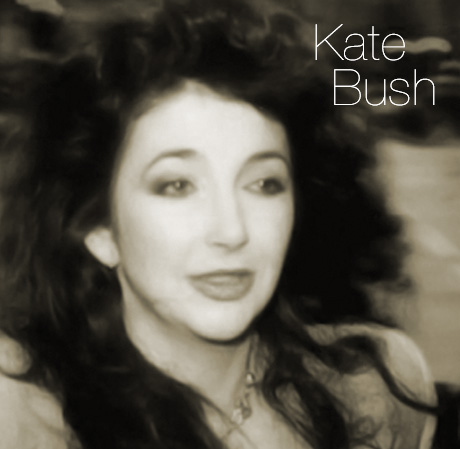 Kate Bush in 1986 / Source : Wikipedia / Author: Philip Chappell aka Squidney. Photo cropped and colours adapted for this page.
Kate Bush in 1986 / Source : Wikipedia / Author: Philip Chappell aka Squidney. Photo cropped and colours adapted for this page.You know,
you create something and you have
an intention that goes with it at the time,
but once you've released
it's really out to other people's hand,
they interpret it or see it.
You know, it's like a painting,
I mean I am sure half the time
people look at a painting
and they have no idea
of what the artist originally
was thinking of
and I am not sure it matters,
I think if you can get
something from it,
if it's thought-provoking
if it makes you feel something,
then I think it's the achievement. —
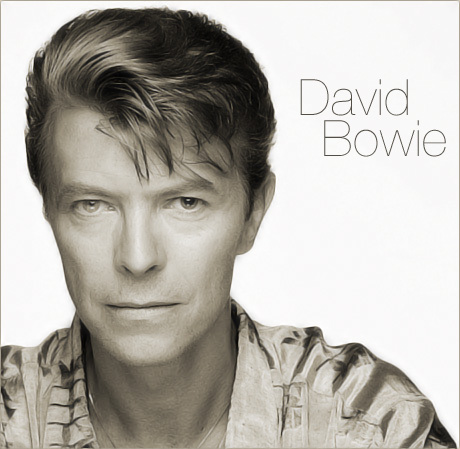 David Bowie / Source : Flickr /
without copyright mentionned - Galerie Robert Sullivan
David Bowie / Source : Flickr /
without copyright mentionned - Galerie Robert SullivanArt was, seriously, the only thing I'd ever wanted to own. It has always been for me a stable nourishment. I use it. It can change the way that I feel in the mornings. The same work can change me in different ways, depending on what I'm going through.
(...)
The most interesting thing for an artist is to pick through the debris of a culture, to look at what's been forgotten or not really taken seriously. Once something is categorized and accepted, it becomes part of the tyranny of the mainstream, and it loses its potency.
(...)
But success in art seems to be a lot more about knowing and buttering up a few people. If a visual artist is articulate about his work, he can tell collectors what to think about what they're buying. —
"New York Times"
June 14th, 1998
Interview by Michael Kimmelman
 Ayn Rand in 1943 / American writer and philosopher ; author of "The Foutainhead" and "Atlas Shrugged" Photo source : Wikipedia (cropping adapted for specific usage in this site's section)
Ayn Rand in 1943 / American writer and philosopher ; author of "The Foutainhead" and "Atlas Shrugged" Photo source : Wikipedia (cropping adapted for specific usage in this site's section)Men have been taught that it is a virtue to agree with others.
But the creator is the man who disagrees.
Men have been taught that it is a virtue to stand together.
But the creator is the man who stands alone. —
Excerpt from "The Fountainhead"
That which is not worth contemplating in life, is not worth recreating in art. —
(...) The art of any given period or culture is a faithful mirror of that culture’s philosophy.
Art (including literature) is the barometer of a culture. It reflects the sum of a society’s deepest philosophical values: not its professed notion
Excerpt from "The Romantic Manifesto. A Philosophy of Literature. Art and Cognition" - 1975
As a re-creation of reality, a work of art
has to be representational; its freedom of stylization
is limited by the requirement of intelligibility ;
if it does not present an intelligible subject,
it ceases to be art
(...)
To reduce man’s consciousness
to the level of sensations, with no capacity
to integrate them, is the intention behind
the reducing of language to grunts,
of literature to “moods,”
of painting to smears, of sculpture to slabs,
of music to noise. (…) Disintegration is
the preface to the death of a human mind.
Disintegration is the keynote and goal of Modern Art
-the disintegration of man’s conceptual faculty,
and the retrogression of an adult mind
to the state of a mewling infant.
Excerpt from "The Romantic Manifesto. A Philosophy of Literature. Art and Cognition" - 1975
The different branches of art serve to unify man’s
consciousness and offer him a coherent view of existence.
Whether that view is true or false is not an esthetic matter.
The crucially esthetic matter is psycho-epistemological:
the integration of a conceptual consciousness.
(…)
As an example of an entire field of activity
based on nothing but the Argument from Intimidation,
I give you Modern art.
-where, in order to prove that they do possess
the special insight possessed only by the mystic “elite”,
the populace are trying to surpass
one another in loud exclamations on the splendor
of some bare (but smudged) piece of canvas.
Excerpt from "The Romantic Manifesto. A Philosophy of Literature. Art and Cognition" - 1975
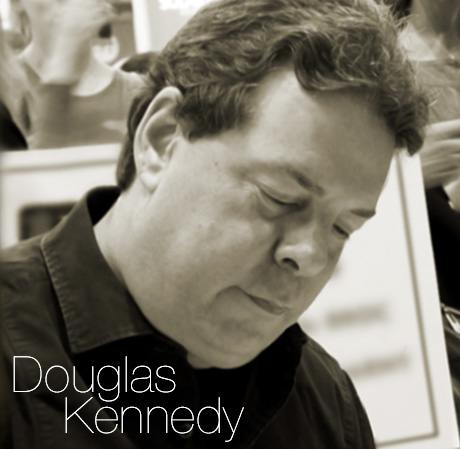 Douglas Kennedy in 2010, during the Paris 30th Salon du Livre in Porte de Versailles. Source : Wikipedia Commons / Author: Thesupermat / Autorisation: Creative Commons Attribution ShareAlike 3.0
Douglas Kennedy in 2010, during the Paris 30th Salon du Livre in Porte de Versailles. Source : Wikipedia Commons / Author: Thesupermat / Autorisation: Creative Commons Attribution ShareAlike 3.0The guy who's struggling
is always a despised figure
in our culture.
Because he's viewed as a nobody.
(…)
And even if they think that he might
have some talent, they're usually
terrified of trusting their own judgement
and backing an unknown quantity.
So the nobody
remains a nobody.
Ecerpt from
"The Big Picture"
by
Douglas Kennedy
 Oscar Niemeyer in his Rio de Janeiroloft, in 2004, during the interview made by Jacques Benoit about the genesis of Brasilia / Photo: Jacques Benoit
Oscar Niemeyer in his Rio de Janeiroloft, in 2004, during the interview made by Jacques Benoit about the genesis of Brasilia / Photo: Jacques Benoit I do not make the architecture that
people expect me to make.
I make the one that I fancy.
(…) The establihed rules are the worst of things.
You must want to break them. —
Everything is really just invention. (…)
I read a very convincing explanation
by poet Beaudelaire who said that surprise,
wonder, astonishment should be considered
as the main characteristics of a work of art.
Paris-Match Magazine - 2005
I enjoy drawing.
It is drawing that led me to architecture
Architecture exists in my head.
My hand is only the vehicle of my thought. —
Connaissance des arts Magazine - 2005
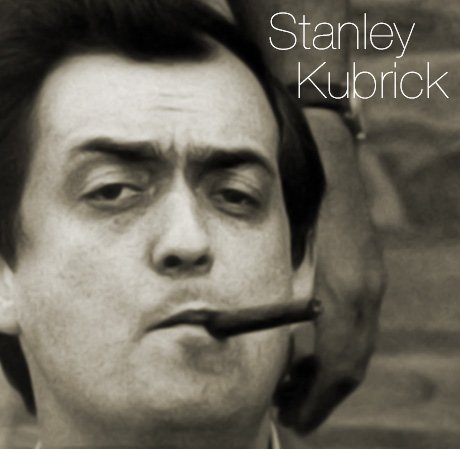 Stanley Kubrick in 1964 / Excerpt of "Dr Strangelove" film's trailer / Photo source: Wikimedia Commons – Photo cropped for usage in this site's section/ (Photo Public Domain)
Stanley Kubrick in 1964 / Excerpt of "Dr Strangelove" film's trailer / Photo source: Wikimedia Commons – Photo cropped for usage in this site's section/ (Photo Public Domain)James Joyce
wrote a wonderful sentence:
"A man's errors are his portals of discovery"
If you can use these errors, you'll add
a dimension to what you do. —
Indeed,a significant part of Contemporary Art
is not interesting, because the obsession
with originality there
creates a type of work that may be original
but is nothing interesting in itself (...)
(…)
It is art, but it is not surprising
and it does not fill you with admiration or surprise.
I think in some areas, music in particular,
a return to classicism seems to be necessary,
in order to stop this sterile search for originality. —
Kubrick (1976 / 2001 / 2011) by Michel Ciment
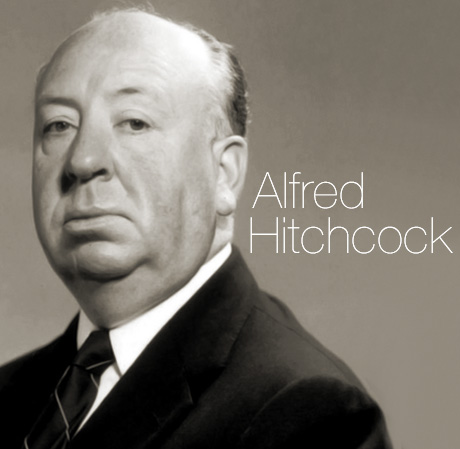 Alfred Hitchcock / Credits: Publicity shot of the director (undated) / Source: Wikipedia (Public Domain)
Alfred Hitchcock / Credits: Publicity shot of the director (undated) / Source: Wikipedia (Public Domain)The color should not be different
from a voice that starts whispering,
and finally comes to a scream.
The color must exist for a reason,
not just for showing off.
It must become an actor, a part of a whole set.
It should work as an actor, not as a decoration. —
Interview by Virginia Wright, undated article
from "Hollywood Citizens News"
If I won't be myself, who will?
"Alfred Hitchcock: Interviews
(Conversations With Filmmakers Series)"
By Sidney Gottlieb
 Christine Sourgins. French Art Historian – Author of Essay "Les Mirages de l’Art contemporain" / Photo source: "Contrepoints" - Photo under Christine Sourgins' copyright / - Original photography : four-colour shot, crropped and set to a monochrome aspect for a sake of coherence with this section's design.
Christine Sourgins. French Art Historian – Author of Essay "Les Mirages de l’Art contemporain" / Photo source: "Contrepoints" - Photo under Christine Sourgins' copyright / - Original photography : four-colour shot, crropped and set to a monochrome aspect for a sake of coherence with this section's design.Duchamp invented the "ready-made" in 1913, but its best known work is the urinal of 1917: an object belonging to everyday life, diverted from its utilitarian function, becoming a work of art by the artist's will. What counts in Duchamp’s art is not to embody an inspiration in a material (with emotions, ideas, dreams, visions, etc) by the means of a formal work –which has been the millennial definition of art.
With Duchamp, the idea takes precedence over the form, and it is the intention that counts: Art has a conceptual basis only. Duchamp no longer creates, he decrees.
In short, Art in its first definition used to aim at Beauty and the celebration of the world. Duchamp, after his "ready-made" efforts, could not care less for beauty.
Which must be replaced by a system based upon the coupling of transgression and provocation, applied to every single chosen item. It has even become the definition of C.A (Contemporary Art): a transgression of Art that has become the art of transgression.
Throughout history, "influencers" always existed, whose action resulted in a supportive membership from a primarily hesitant audience ; however, until then the prescriber relied on the content and the intrinsic quality of the work. (...) A drastic development has taken place : it is now and mainly the quality of the people and institutions who are interested in a work, which determines its value.
(...)
In a world of upstarts, the so-called Contemporary Art is an easy sign of recognition: it allows you to exhibit a sign of culture that spares the effort of acquiring any real one.
Sinking up crazy gobs of money into a blank canvas' buying (...) proves and demonstrates the purchaser’s fortune, his creativity and his audacity. (...) Some have also attempted a parallel between the Art Market and the Stock Exchange, where some companies are overpriced and others, although very innovative, do not even appear. The same happens regarding the artists’ positions vis à vis the Art market.
(In France) The Ministry of Culture sets as a rule, with all its authority (...) that nothing exists outside of what is referenced and promoted by its services. Outside the "Conceptual Art" and "Neodadaism" Movements, one simply does not exist ; you are not "contemporary" : you are dead. (…) In France, as of the 1990s, the intellectual and media networks produced speeches which delegitimized the artists categorized as "Artistes de l’œil et de la main" (meaning relying on their hands and their eyes to create), eg the "Non-Duchamp" artists. Influenced by these Press campaigns, a collector once brought back a coveted canvas to its author, saying he still liked it, but that now "painting is through ". (...) But reducing too crudely Contemporary Art to a financial asset like any other, would trivialize it and harm it. Therefore, maintaining the fiction of an indivisible art where the stars of Contemporary Art would be the worthy successors of Puget, Rodin, Delacroix or Monet conceals these works' a real identity (that of a product), that would celebrate the apotheosis of a commercial world where setting artificially a work's value makes it instantly worth that value -or, as Duchamp did, decreeing everyday objects "ready-made", therefore labeling them "works of art".
© Jacques Benoit. Design, works, photographies and texts by Jacques Benoit and under the author’s copyright. Except when derived from other sources and then mentioned as such.